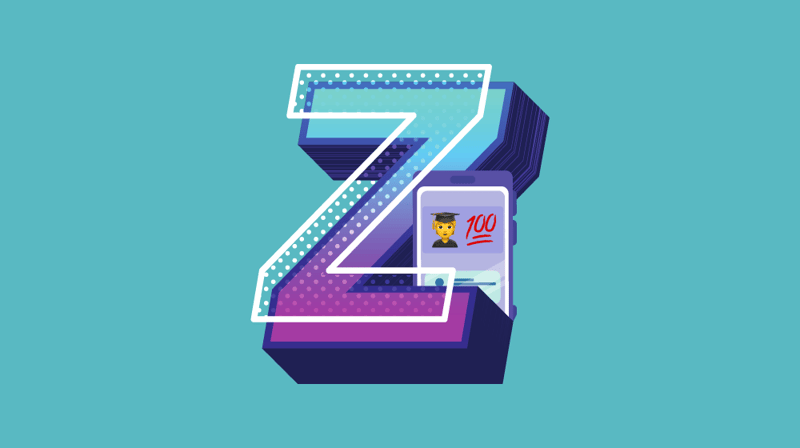Our work all comes back to the students.
Whether you’re most interested in forming relationships, making a difference through mentorship, or creating a lasting impact by changing administrative systems, you likely got into the field to support student success.
And despite the global pandemic, students are still moving forward with their plans to graduate and begin pursuing careers. So, we still need programs and resources to prepare them.
The future of what and how our work with students looks like might change as a result of COVID-19; however, I am confident that the why — the reasons behind our work — will not.
As a career services professional, I wanted to discuss ways that SA pros can focus on developing students’ skills and experiences, regardless of institution or service delivery model, since preparing students for their futures is a large part of our why.
Here are my 22 suggestions for career and professional development events that student affairs professionals can host virtually — during the pandemic and beyond.
Professional Development
There are plenty of ways to creatively innovate what professional development looks like for your students — both in-person and virtually. Expanding into the virtual space can also be an opportunity to reach students who may usually be unable to attend in-person activities.

1. Virtual book clubs
Book clubs are an easy way for students and alumni to share what they’ve been reading lately, even if it’s just for fun! I’ve even seen some groups take their discussions to the next level by listening to audiobooks, watching film adaptations of books, and inviting authors to join their calls.
2. Podcasts
Podcasting is a great way for anyone who likes to consume information while multitasking. You can discuss your favorite podcast episodes with students or even start your own podcast!
3. Virtual escape rooms
Gamified experiences, like the Hogwarts Digital Escape Room, are a unique and fun way to challenge your students’ learning and skill development.
4. Live webinars or seminars
Students can attend these sessions on a singular or recurring basis, whether that means finding a free webinar online or tapping into staff and faculty members to lead one.
Student leaders who have presented at past conferences can be amazing presenters, too. I’ve also seen half-day and day-long virtual professional development events, like the Arizona Statewide Career Conference, with multiple breakout sessions that help customize the experience further.
5. Recordings of previous events or speakers
Even if live events aren’t working out, you can still share and discuss experiences and information using recorded content.
6. Self-paced materials
Self-paced activities and courses can resonate with independent learners who enjoy bettering themselves at their own pace.
I recently saw an excellent example of structured and self-paced learning, resulting from an increased vigor and attention to racial inequity, called Justice for June. This resource is a great starting point for those seeking to create their own framework for engaged, autonomous, and distance learning.
Academic Fields
Now is a great time to create and distribute digital resources for students to access on their own or for faculty to integrate into existing coursework.
7. Career readiness courses
The University of Alabama at Birmingham (UAB) just launched a Canvas course comprised of six modules based on career readiness competencies.
Similarly, my career programming team at Northern Arizona University (NAU), released several online, self-paced modules in Blackboard Learn, covering a variety of career-related topics for students and alumni to utilize on their own.
To engage faculty, UAB will be promoting the course via their Career Influencer Network, a new professional and teaching support program launching through their Center for Teaching & Learning. Likewise, NAU continues to partner with their e-Learning and Faculty Professional Development Program colleagues to create several pre-packaged assignments and projects to make learning easy and engaging.
8. Virtual career fairs
Virtual career fairs represent a new space that no single platform has perfected yet, which also makes it a great space for innovation.
Kevin Grubb, Executive Director of the Career Center and Assistant Vice Provost of Professional Development at Villanova University, recently shared his perspective about this opportunity to innovate in a national career services discussion post:
“For the students who may not have access to networks, who are exploring majors, who have a major that could speak to a variety of career paths — we find them looking for an extra boost during a traditional fair. Underneath that may be a confidence barrier. They may be asking, ‘Will an employer value the skills I have?’ It comes down to this: How can we give students a leg-up, virtually?”
So, how can we best serve all students and alumni through virtual career fairs? As my team plans for our virtual fairs in the fall, here are my suggestions:
- Choose a platform and staff your event appropriately. Given how integrated Handshake is at my institution, we will likely incorporate their virtual career fair software. We hope this will offer our students and alumni a seamless experience between searching for opportunities on the Handshake platform, alerting them about employers that are interested in their profile ahead of time, and connecting individually or as part of a group during the fair. When selecting your own platform, make sure you explore video conferencing, audio-only, and text-only options in order to be as accessible as possible. Additionally, if your platform supports multiple breakout sessions, make sure to have a staff member or facilitator pre-assigned to each session in order to provide any necessary information and technical assistance to recruiters and attendees.
- Form partnerships with employers and set clear expectations. As your fair gets closer, take time to reach out to event partners, sponsors, and speakers to educate them on the expectations and requirements for your event. For many, this will be their first venture into the digital recruiting space, which can be intimidating. My office is handling this by having our employer engagement team conduct a pre-event run-through with registered employers.
- Develop and implement an integrated marketing plan. This should include using multiple communication channels and platforms, digital and print advertising, and mass email campaigns, along with targeted emails. Check out some tips on designing your marketing materials here. As there is no dedicated marketing position in our career office, we rely heavily on student employees and other folx with graphic design talents. In exchange for the event materials they create, we provide them with professional references. This way, we can keep our marketing cost-effective while aiding in our students’ professional development.
Networking Events
Many recruiters and professionals actually prefer to meet people virtually and network online. Madeline Mann, a human resources professional and recruiter, loves the fact that you can reach more people this way — anywhere in the world!
Hosting a mix of formal and informal virtual networking events is a wonderful way for SA pros to help facilitate connections between students and professionals.
9. Group how-tos and tutorial sessions
These types of events are popular because the participants can engage with the hosts while also learning something new, like how to use the LinkedIn alumni finder or the networking functions of a digital platform.
10. Virtual introductions via email or direct message
This allows you to leverage your own networks to connect students with professionals in a variety of fields.
11. Informational interviews
Although informational interviews are traditionally conducted in person, now is the perfect time to explore doing them virtually — by email, DM, or video call. Modern challenges require modern solutions, right? Technology affords our students another great way to expand their networks and help them learn more about a particular field or career.
12. Virtual office hours
Many students have quick questions about a resume or cover letter before they submit an application or want to make sure their job search strategy is decent before applying to open positions. Virtual office hours are an easy way to remain accessible regardless of distance.
13. Town hall meetings
These group forums are a great way to bring students, staff, faculty, and community members together, and another way to spark dialogue about the career and professional development needs of each.
14. Happy hours or coffee chats
From my experience, informal conversations like these seem to be a hit with students. They’re a nice break from the many meetings and classes that students are used to.
15. Collaborations with your alumni engagement office
Much like career advisors, alumni engagement staff are also interested in reaching out to recent graduates.
In fact, I recently attended a very fun, informal “coffee & chat” Zoom call, hosted in partnership between my university’s career and alumni offices. It was a delightful experience, in which I had a chance to chat with other young alumni about balancing self-comfort and self-care, remaining nimble and agile in their careers, and more!
16. Virtual game nights
I have been regularly hosting these as a low-stakes way to stay connected with my student staff. We especially love playing Jackbox games like Quiplash or Drawful. These casual events are great ways to reunite student workers, classmates, or members of student clubs and organizations.
For more event ideas and resources, I would highly recommend Presence’s program planner, which has been newly adapted for all things digital.
And If you want to read more about using social media to engage students with virtual events, I like this Hootsuite article and this Harvard Business Review article.
Job Search Prep
No one knows exactly what college career services will look like in the aftermath of COVID-19. But, for now, we can focus on innovating and digitizing a variety of traditional career readiness practices to reach our students and alumni.
17. Resume and cover letter reviews
I’ve seen numerous career offices successfully pivot their service delivery models to offer appointments with their career counselors. You can screen share the documents or use programs like Google Docs to collaborate with your students in real-time.
18. Mock interviews
Technology also plays an important role in interviews these days, and helping students navigate the technical aspects for video interviews has been much easier via video call.
In a recent mock interview that my director had with a student seeking a career in ecological data analysis, she witnessed the power of preparing students in a virtual space:
“When I asked the first data-related question, [the student] asked if he could share his screen, and I thought ‘Why not?’ He wound up utilizing this technique for three or four of the questions and showed me two different research projects that he has worked on. I got a great insight into his research experience, technical skills, and communication skills. A picture is truly worth 1000 words!” — Emily McCarthy, Director of Career Development at NAU
19. Workshops and class presentations
In addition to individual appointments, I have seen an increase in career offices utilizing virtual workshops and presentations. Although offering combined sessions for unrelated audiences was previously a logistical nightmare, the virtual events have been anything but. My office has actually seen a huge increase in requests for collaboration between faculty in different programs due to the ability to simultaneously join these events remotely.
20. Continued job search assistance
We have a unique opportunity to help our students who are graduating and entering the workforce during the pandemic.
Rose Nakamoto, director of the career center at Santa Clara University, wrote an excellent article addressing this very situation and encouraging our recent graduates to pursue opportunities in organizations that are thriving. I highly encourage you to read her open letter to graduating students. In it, Nakamoto writes:
“Take an entrepreneurial approach and focus on sectors that are growing. Even if these areas don’t align with what you imagined you’d be doing after graduation, cultivate a flexible and open mindset; this will be essential for students in a COVID-19 economy.”
Appointments and workshops that discuss strategies for job searching can help students and alumni along the next step in their career journeys. There are many resources available to include in your student meetings; I have found this Fortune article and this Handshake article particularly informative.
Although it’s important to recognize the uncertainty and chaos surrounding our students’ and alumni’s future careers, it’s equally important to challenge and support them as they redefine themselves, their communities, and their futures.
Internships & Volunteering
Now is the perfect time for students to get some practical experience through virtual volunteer and internship opportunities! If you’re looking for some ideas, a great place to start is Meg Sunga’s recent blog post about virtual, high-impact practices, including internships.
21. Remote internships
Remote internships are most common for internet-friendly jobs, such as freelance writing, translation, graphic design, website management, and other roles in the tech industry. These internships can also be a great way to connect international students with career opportunities!
It’s also important to mention that plenty of internships are still being offered in-person, as companies slowly recalibrate their operations, so don’t let your students discount traditional experiences, either.
22. Volunteering
Volunteering is another great way for students to get involved with their communities and help strengthen various skills. Not only does it feel good to give back, but volunteering also allows students to explore potential careers and begin building their own professional network.
Jodi Tandet recently published an excellent post that covers virtual ideas to keep students engaged, including a section on remote volunteering. She makes a great point about reaching out to local non-profit partners and philanthropies that student orgs support to see how you and your students can continue supporting their work during unprecedented times.
Volunteering gives students a chance to try out a career and learn more about an industry. Plus, it feels good!

There are so many ways to cultivate innovation, non-linear career mobility, and lifelong learning opportunities for students and alumni right now. That’s what I love the most about working in student affairs.
What does this new world of virtual career and professional development look like at your institution? How are your teams creating, innovating, and implementing traditional approaches to the virtual space? Let us know by tweeting us @themoderncampus and @Velocirathbone.





